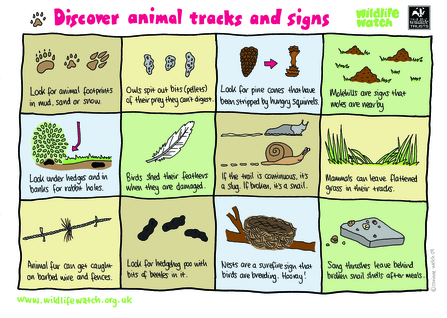
Family activity: How to make an animal footprint trap in your back garden

It’s cold outside and some animals hibernate at this time of year to stay safe from the cold and to wait until their food sources return in the spring. However, lots of animals keep on going all year round, even throughout the winter and yet we may miss our garden visitors when we are inside keeping warm.
Wouldn’t it be fun to know what animals are moving around, even when we are not looking? Here’s where your footprint trap could help your family discover some of your garden visitors.
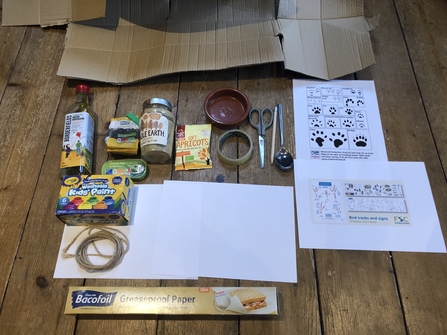
1. What kit you will need (pictured above):
Hopefully you have access to all of these items without having to leave your home.
- Scissors – sharp enough to cut through card (job for the adult)
- A long rectangle of cardboard (the thicker the better as it will protect the inside from the rain.) Think about the size of animal that may pass through your footprint trap and size it accordingly. I used a delivery box which I unfolded. Something small enough to stop my dog entering!
- A long length of string
- A pen or pencil to make holes
- A length of white paper (3/4 length of your ‘tunnel’)
- Sticky tape
- Grease proof paper
- Paint (non-toxic is essential)
- Oil that you use in your kitchen
- Spoon and dish you can use to mix paint and oil
- Guide to ‘UK garden animal prints’. Pinterest has a great range of easily accessible sheets with small mammal and bird tracks which you can print off and study with your little one.
- Unsalted unprocessed food – e.g. fish, seeds, nuts, fruit, lard, nut butter.
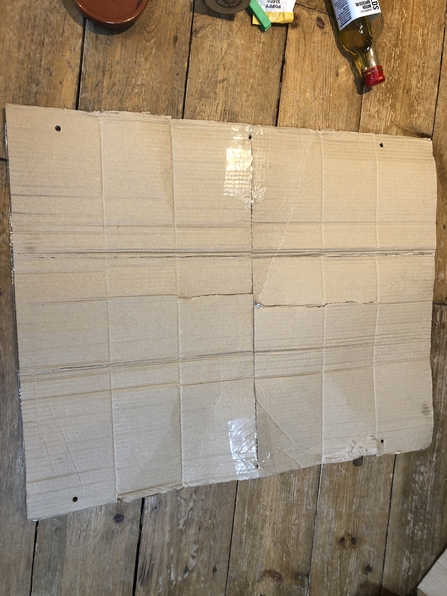
2. Firstly, collect your rectangle of card (mine measures 75cm x 55cm). Fold your card into three sections along the longest length and using your pencil, pierce three holes evenly along the outer long edges.

3. Take your white paper and fit it along the middle section of your cardboard, with sticky tape at each end.

4. Take two lengths of grease proof paper and tape those across both ends of your white paper.
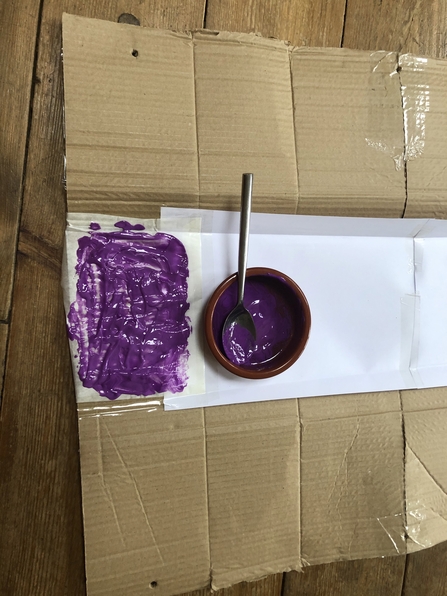
5. Mix your non-toxic poster paint (make it a bright colour so it shows up clearly) with a glug of kitchen oil and just before you are ready to place out in your garden, daub the mixture across the greaseproof paper at both ends. The oil will stop the paint drying out quickly.

6. Then, in the middle of the white paper, put some tasty food that garden visitors could not resist like wet cat food, nut butter, seeds, lard, soft fruit. Or a mixture of all.
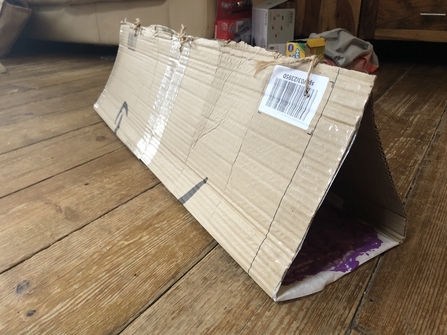
7. Make your triangular prism by tying string through the holes at the top. Make sure it closes to avoid rain drops over your tracks.
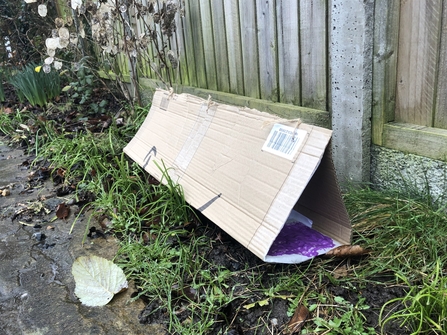
8. Leave in the garden, preferably on dry days and nights. Position where you think animals may scurry or tip toe past. Then, go and investigate each day. Look to see if any prints have been left. Check that the paint has not dried out and that there is still a supply of food. It may take a few days before animals are brave enough to venture in!
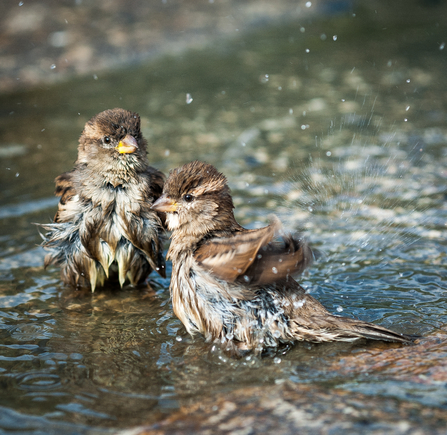
Sparrows in bird bath by Chris Speller
Water stations for your garden visitors….
Now you have discovered how many different animals are visiting your garden, it may be a good idea to leave out rain collection pots, so that animals have somewhere to access a drink or take a little bath. Here are some ideas from my garden.
- Small bird drinking station - Floating logs in your pond – I’ve seen robins and sparrows perching and drinking.
- Small mammal and bird station - A plastic plate with a stony ‘beach’ – Great for tiny mammals to drink from and small bird bathing.
- Large bird drinking station - A plastic box, filled with rain water with emerging plant pots – perfect for larger birds to perch and drink from
- Invertebrate drinking station - A little shallow tray with stones or marbles – so bees and other minibeasts can dip in and sip water without submerging.
We'd love to see pictures of the animal footprints and water stations from your garden!
SHARE THEM WITH US ON FACEBOOK





